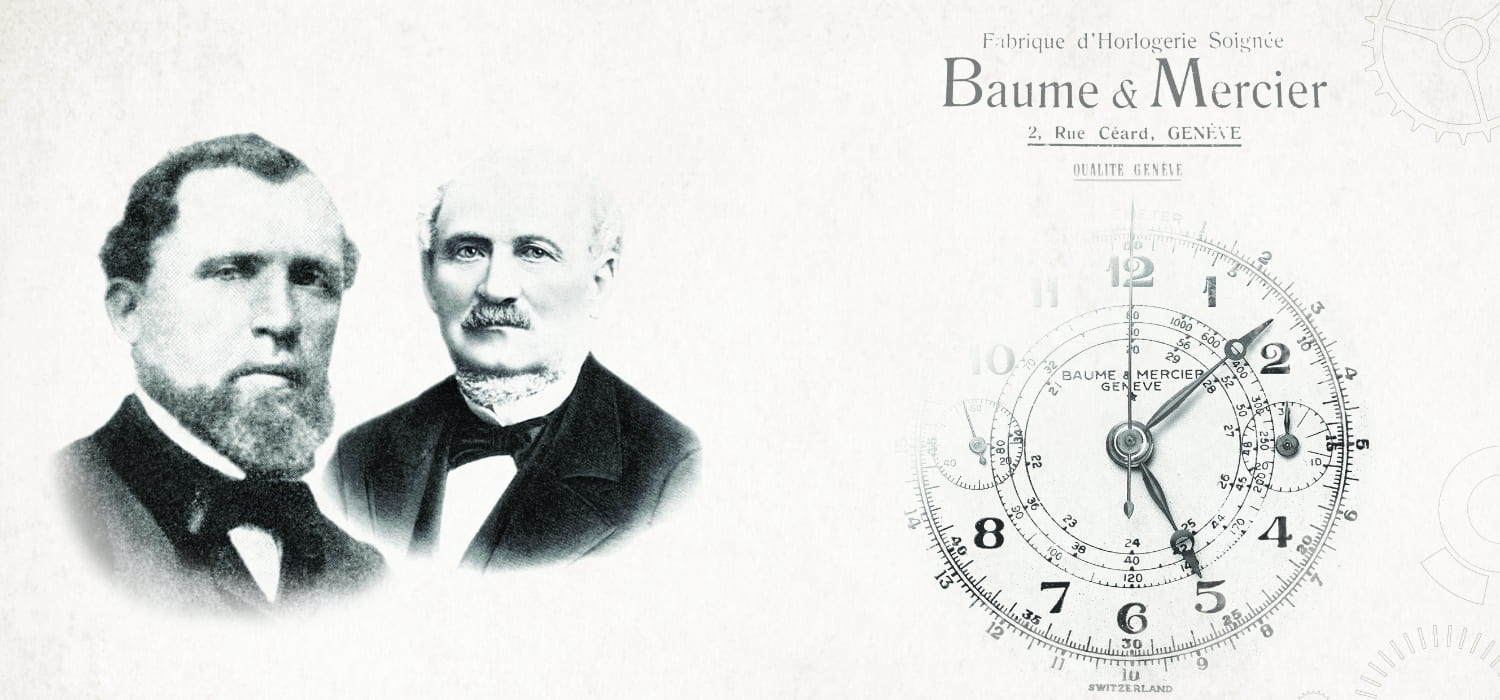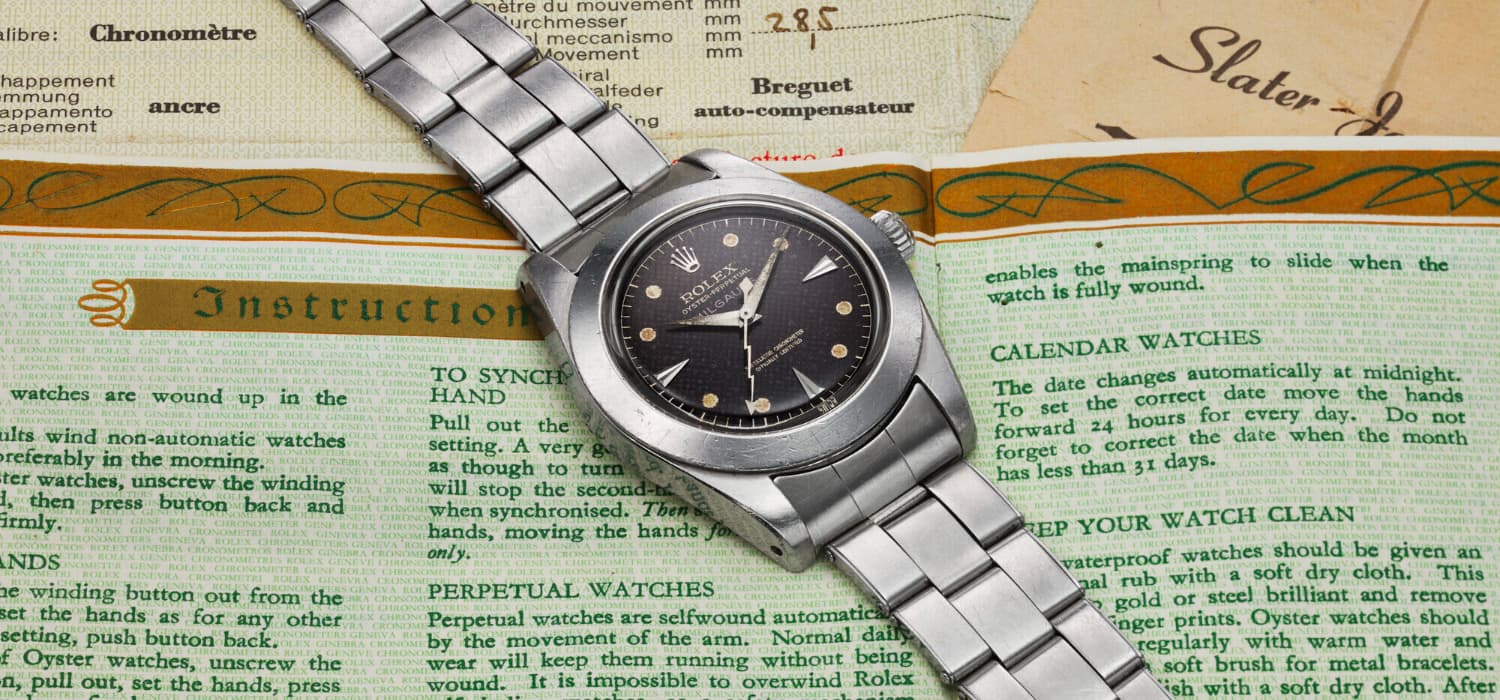
The story of Baume & Mercier—one of the oldest watchmaking houses in the world—begins with a meeting between Swiss watchmakers Louis-Victor and Pierre Joseph Célestin Baume and the Russian-born Paul Mercier.
The History of Baume & Mercier

Nestled in the Jura Mountains lies Les Bois, a quaint village with deep watchmaking roots. It was here, in 1830, that brothers Louis-Victor and Pierre Joseph Célestin Baume opened their first watch shop, laying the foundations for what would eventually become Baume & Mercier. For two decades, they sold pocket watches from this small Swiss workshop. Then in 1847, seeking independence and broader horizons beyond Switzerland, Pierre Joseph Célestin relocated to London to expand the business. Thus began a significant new chapter for the brand in the heart of the British Empire.
Even in these early years, the Baume brothers’ commitment to craftsmanship took shape around the motto: “Accept only perfection. Manufacture only watches of the highest quality.”

In 1851, the brothers formally established Baume Brothers in Clerkenwell, a small district in London. The business flourished rapidly, gaining a foothold across British colonial markets including India, Australia, New Zealand, and Singapore. Their technical precision earned them accolades in the prestigious Kew Observatory chronometer trials, culminating in a notable win in 1893. A Baume pocket chronograph with a tourbillon movement scored an impressive 91.9 out of 100—setting a record that remained unbroken for a decade. True to their credo, the Baume brothers devoted themselves entirely to quality and innovation.
The Watchmaker’s Son from Russia: Paul Mercier
As the London chapter of the Baume family expanded, destiny introduced a new figure to the story—Paul Mercier. London was not just a base for commercial expansion but the setting for an important encounter. In 1912, William Baume—third-generation descendant and sole heir of the Baume family—met Paul Mercier, a Swiss-Russian watch enthusiast working for Geneva-based watchmaker Haas.
Mercier, whose real name was Paul Tchereditchenko, was the son of a Swiss mother and a Russian army officer. Like his father, he initially served in the military but soon left Russia in pursuit of a different future, eventually landing in London. He would soon become the second namesake of Baume & Mercier.

The two men founded Baume & Mercier Genève in 1918 and officially registered the brand on August 27, 1920. As the Baume and Mercier families united under a shared vision, the world was undergoing major cultural and political shifts. Following World War I, global interest in watches grew significantly. The 1920s—often referred to as the “Roaring Twenties”—were marked by a cultural renaissance in Europe, particularly in music, fashion, and design. Women were becoming more visible in public life, gaining new rights such as suffrage, and redefining their roles in society.

Drawing on Paul Mercier’s expertise in jewelry design, the company embraced these social changes. Throughout the 1920s and 1930s, Baume & Mercier produced jewelry-style timepieces in the baignoire silhouette, adorned with gemstones and crafted to be worn as rings or pendants. In the late 1940s, they introduced the Marquise, one of the brand’s most iconic women’s watches.
The 1950s brought a new design philosophy centered on harmony and proportion. In 1964, Baume & Mercier adopted the Greek letter Φ (phi) as its logo—a reference to Leonardo da Vinci’s golden ratio, symbolizing balance and beauty. Around this time, men’s watches embraced classic round cases, a design approach that would influence today’s Clifton series, inspired by the Golden Fifties.

Rebellion in Steel: The Riviera of the 1970s
The 1970s not only ushered in the Quartz Crisis but also sparked the creation of bold, avant-garde designs in the watch industry. Among these was the Riviera, Baume & Mercier’s standout model with a striking twelve-sided bezel and a stainless steel case. Its geometric structure broke away from traditional round forms and challenged the dominance of gold in luxury watches.
Named after the French Riviera, this model was designed to evoke the effortless sophistication of the Mediterranean coastline. It introduced a new kind of elegance—more sporty, architectural, and audacious. Over the years, the Riviera has been reimagined in various materials and configurations, and in 2023, it celebrated its 50th anniversary, reaffirming its status as a brand icon.
Main Collections of Baume & Mercier

Hampton
Debuting in 1994, the Hampton combines classic elegance with modern sophistication. Its slightly curved rectangular case ensures a comfortable fit on the wrist. Inspired by Art Deco, the collection features clean, refined dials paired with leather or stainless steel bracelets. Its name pays homage to the tranquil seaside town of Hampton, USA, reflecting the watch’s relaxed yet timeless appeal.

Clifton
Launched in 2013, Clifton offers a vintage-inspired design language rooted in early 20th-century timepieces. With round cases ranging from 39 to 45 mm and dials marked by Roman or Arabic numerals, this collection is both elegant and versatile. Many models include complications such as moon phase indicators, underscoring the brand’s mechanical heritage.

Classima
Introduced in 1997, Classima embodies “timeless design” and “understated elegance,” according to the brand. The round case, Roman numerals, and the date window at 3 o’clock define this clean, minimalist collection. As one of Baume & Mercier’s most diverse product lines, Classima offers a refined and accessible entry into Swiss watchmaking.

“In 2018, Baume & Mercier unveiled its first in-house movement, the Baumatic caliber, following four years of development in collaboration with the ValFleurier RIMS Research and Development team at the Richemont movement manufacturing facility. Today, Baumatic powers watches across multiple Baume & Mercier collections, representing a significant leap forward in precision, durability, and performance.”
A part of the Richemont Group since 1988, the brand unveiled its latest innovations at Watches and Wonders 2025. Baume & Mercier, with one of the most “poetic” booths of the fair, introduced its new timepieces under the motto that every moment in life is worth celebrating. Just as a photographer captures life’s most precious moments through a lens, Baume & Mercier freezes time on the dial — transforming fleeting instants into enduring expressions. For nearly 200 years, time has been transformed into a perspective, a frame, through its dials — offering an aesthetic journey on the wrist. All of these watches have been crafted under the same guiding principle since the very beginning: “Accept only perfection. Manufacture only watches of the highest quality.”
You can find detailed information about Baume & Mercier watches on the website of Konyalı Saat, which has been bringing leading watch brands to enthusiasts since 1951. Discover Baume & Mercier timepieces — one of the most established names in Swiss watchmaking — at Konyalı Saat stores, backed by over 70 years of experience and a team of seasoned professionals.




